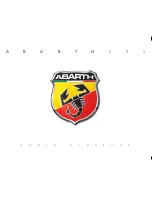
Driving on Snow or Ice
Most of the time, those places where your tires meet
the road probably have good traction.
However, if there is snow or ice between your tires and
the road, you can have a very slippery situation. You
will have a lot less traction, or grip, and will need to be
very careful.
What is the worst time for this? Wet ice. Very cold snow
or ice can be slick and hard to drive on. But wet ice
can be even more trouble because it may offer the least
traction of all. You can get wet ice when it is about
freezing (32°F; 0°C) and freezing rain begins to fall. Try
to avoid driving on wet ice until salt and sand crews
can get there.
Whatever the condition — smooth ice, packed, blowing,
or loose snow — drive with caution.
If you have traction control, keep the system on. It will
improve your ability to accelerate when driving on a
slippery road. Even though your vehicle has a traction
control system you will want to slow down and adjust
your driving to the road conditions. See Traction Control
System (TCS) on page 4-9.
If you do not have a traction control system, accelerate
gently. Try not to break the fragile traction. If you
accelerate too fast, the drive wheels will spin and polish
the surface under the tires even more.
4-26
Summary of Contents for 2005 Park Avenue
Page 5: ...These are some examples of symbols that may be found on the vehicle v ...
Page 6: ... NOTES vi ...
Page 14: ...Put someone on it Get it up to speed Then stop the vehicle The rider does not stop 1 8 ...
Page 114: ... NOTES 2 50 ...
Page 117: ... NOTES 3 3 ...
Page 118: ...Instrument Panel Overview 3 4 ...
Page 148: ...Cluster with Driver Information Center DIC United States version shown Canada similar 3 34 ...
Page 232: ... NOTES 4 44 ...
Page 334: ...Engine Drive Belt Routing 3 8L V6 Engine 3 8L V6 Supercharged Engine 5 102 ...
Page 362: ...Maintenance Record cont d Date Odometer Reading Serviced By Maintenance Record 6 28 ...
















































